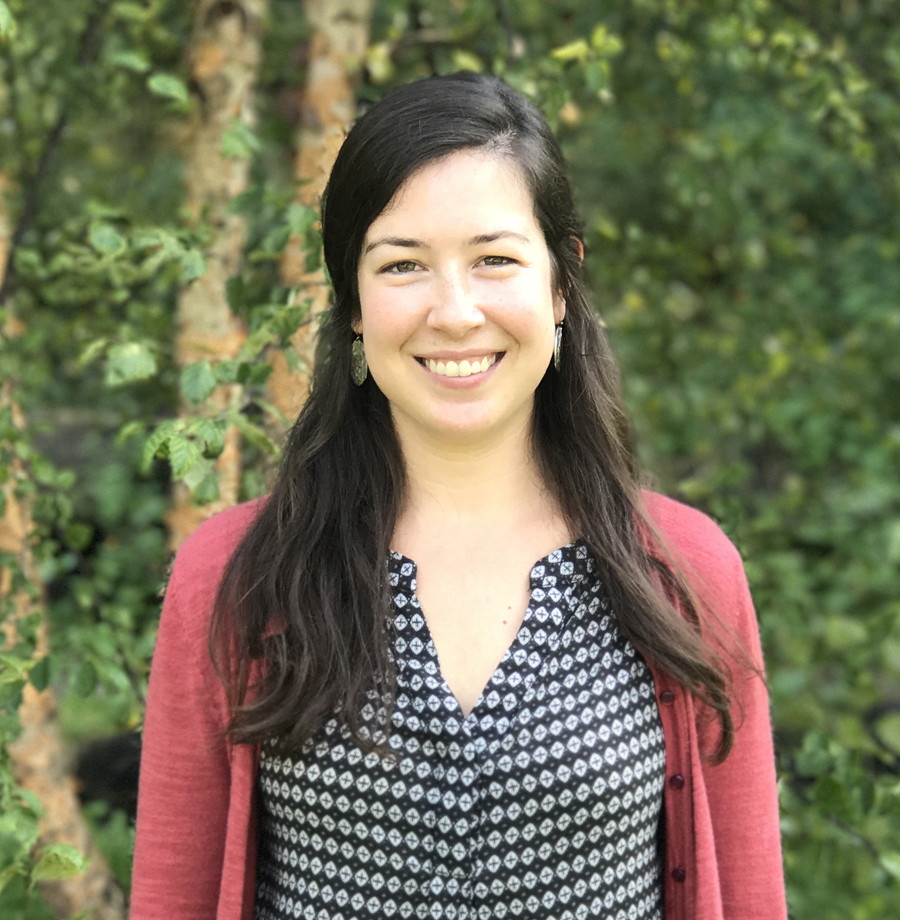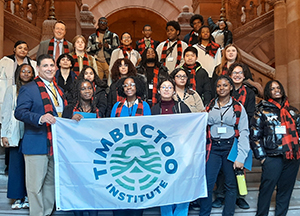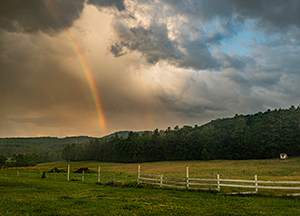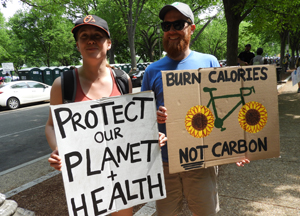
The Adirondack Food Justice Summit - Looking toward the future
By: Jackie Bowen - Adirondack Council Conservation Fellow
Wednesday, March 14, 2018
When sitting down to the dinner table, many of us don’t consider where our food came from, how the laborers were paid, or how our level of privilege determined what’s on our plate. In fact, I think many of us are guilty of giving little thought to our food system and the multiple-scales at which it operates (local, regional, national, and international). Thankfully, there are Adirondackers who do ask these questions, whom are deeply tapped into this issue, and seek to strengthen our regional system.
Earlier this month, the North Country Food Justice Working Group (a coalition of nonprofit and for-profit organizations, community members, local businesses, farmers and farm workers, and government agencies) hosted its first annual Food Justice Summit. The summit, “Feed Back: Growing and Sharing the Abundance,” saw the convergence of powerful and passionate minds seeking to identify, expose, discuss, and provide solutions to the weaknesses of our Adirondack food system. With over 150 attendees, it was a powerful event. Here are a few highlights from this information-packed day.
What Does Food Sovereignty Mean to You?
As the keynote speaker of the summit, Executive Director of the Northeast Organic Farming Association of NY Andrianna Nastoulas set the tone for the day with provocative facts and anecdotes about farms, farmers and farm workers. She included info-bites like:
- For every dollar spent by consumers, farmers and ranchers receive only 17.4 cents.
- In 2012, it was found that 95.4 percent of principal farm operators are white, which demonstrates a strong lack of diversity in the industry.
- In 1935, there were seven million farms. Today, there are only two million farms that are double the size of what they used to be. This change means that small farmers have been increasingly pushed out of agriculture. Farmers of color have been displaced the most.
- The 25 percent drop in organic milk prices has been devastating.
- The North American Free Trade Agreement (NAFTA) displaced 2.4 million farmers in Mexico. NAFTA abolished community-owned land, which left nothing for Mexican farmers to work. Many had to leave their country to earn money.
Nastoulas also pushed attendees to consider the term food sovereignty. So, take a moment and ponder, what does food sovereignty mean to you?
If you’re like many of us, you said something like, “equal access to local, healthy and affordable food” - or more succinctly termed, food justice. But, as we learned, food justice is only half of the equation. We had failed to consider farm justice. This encapsulates the need for farmers and farm workers to be paid reasonable prices for products (think of declining milk prices), livable wages, and have good living and working conditions.
It was this discussion of farm justice that made me very aware of how little we think of the people – yes, the living, breathing bodies – that are behind the food we consume. This also means we are often unaware of the severe hardships and inequities many people are chronically faced with in the ag industry. For me, this was driven home by a breakout session called Migrant Farmworkers: Food Sovereignty and Justice.
“Entice, Coerce, Force”
Renan Salgado, a Human Trafficking Specialist with the Worker Justice Center, relayed the numerous injustices faced by farm workers. He also mapped out how agriculture and slavery share a historic and symbiotic relationship with humanity, including the United States. Although it operates under a new guise known as human trafficking, slavery persists today in the U.S., as agriculture continues to be an important part of our economy.

Renan Salgado of the Worker Justice Center sharing his experiences as a human trafficking specialist.
With around 36,000 farms, New York State is seen as a powerhouse in the ag industry. And as such, the state relies on undocumented workers. In any given year, there are between 50,000 to 100,000 undocumented workers on NYS farms, including operations in this region.
These laborers arrive in New York for a number of reasons. Some seek to work, for they are often pushed out of their own countries by large U.S. industry companies buying up the land, but others are brought here by human trafficking operations. These individuals are subject to abuse and exploitation, and live in fear due to their criminalized and de-humanized status. Based on his investigative work, Salgado shared stories of the living conditions these laborers are forced to endure. As one example, he showed images of a decrepit trailer home that had been used to house 30 undocumented laborers.
The scale, depth and dark places of our food system are far greater than most of us realize. This session was a strong reminder to care about where your food comes from, to know how the produce and meat/product is grown or made and by whom, be aware of the ethics of the operation, and to recognize and be vocal against the impacts our country’s industry has on others. Ignorance is unacceptable.
Alas, There is Hope in the Adirondacks
Throughout the country, we are experiencing a grand awakening with our food systems. People want to know where and how food is grown, what happens to it after it leaves a farm (aka- how is it processed), how far it travels before it arrives in a grocery store or farmers’ market, and how it is packaged. Young people are integral to this grand awakening. They seek to create a better food system that is localized, incorporates green and sustainable practices, equitable, and sustainable long-term.
Missy Hall from NYS Pollution Prevention Institute talks food waste.
If you are up-to-date on Adirondack trends, you have likely heard about the revitalized farming movement that has been occurring over the last decade. It is characterized by young people moving to the Champlain Valley region of the eastern Adirondacks to start or join farming operations.
By young people, I mean individuals ranging in age from early twenties to late thirties, which strongly varies from the average age of 58 for conventional farmers in the U.S. In this movement, we are seeing young educated folks, possessing at least a college degree, directly inserting themselves into the very root of the food system: farms.
But these young people are not drawn to conventional agricultural industries like dairy. Rather, they are interested in working within and strengthening the local food system as a whole, to create a sustainable, affordable, and profitable network for community members. This means individuals are choosing to work on organic, sustainable and/or ethical farms. Others are forging the way in creative land acquisition to start their own operations.
The number of young faces at the Food Justice Summit typified this eastern Adirondack movement. But not all were farmers. In fact, many were not. To be connected to the food system does not mean that people may only be farmers. The food system has many roles and players within it, including: farm workers, retailers, composters/waste handlers, consumers, resource organizations, etc. The summit provided the opportunity for these players to join the conversation. It provided time and space to intentionally determine how our local food system should be shaped.

Support Your Local Farmers
This summit will be an annual event that will continue to educate and motivate people about the possibilities and needs of our local food system. Go. Learn. Connect.
In the meantime, discover who your local food producers are! Need help? Adirondack Harvest has a lot of great resources.
One way the Adirondack Council supports local farms is through our Cool Farms/Healthy Park micro-grant program. Funds are awarded each year to farmers in the Champlain Valley of the Adirondacks that seek to implement climate-smart projects - The Council has awarded over $40k in the last two years. These awards are partially funded through the sale of Carbon Reduction and Carbon-Zero certificates. Learn more about the program and the certificates.
A huge thanks to the Food Justice Working Group, North Country Public Radio, Adirondack Foundation, Adirondack Harvest, the Wild Center and the many more other sponsors and individuals that made this event possible.
 Jackie is the Council's Conservation Fellow. She has a Master’s Degree in Environmental Law and Policy, with a certificate in Land Use Law, from Vermont Law School. During her year and a half program she interned in Washington, D.C. at American Rivers where she worked with the Government Relations team to track legislation, identify federal funding sources and research tribal water rights.
Jackie is the Council's Conservation Fellow. She has a Master’s Degree in Environmental Law and Policy, with a certificate in Land Use Law, from Vermont Law School. During her year and a half program she interned in Washington, D.C. at American Rivers where she worked with the Government Relations team to track legislation, identify federal funding sources and research tribal water rights.
In 2013, Jackie graduated from SUNY Geneseo with a degree in Anthropology. Although she enjoyed learning about the cultural nuances that influence the way people act and interact with one another, her love of this mountainous region never ceased, and, ultimately, drove her back to graduate school to learn how to help protect this unique corner of the world.
As a native of nearby Plattsburgh, Jackie grew up hiking, swimming, cross-country skiing, and camping in the Adirondacks. The ‘Dacks represent restorative and spiritual beauty and the intersectional balance between human and natural life. This is just a sliver of what propelled Jackie to become focused on not only land conservation, but on preserving the ecological integrity and wild character of the beautiful Adirondack Park.






